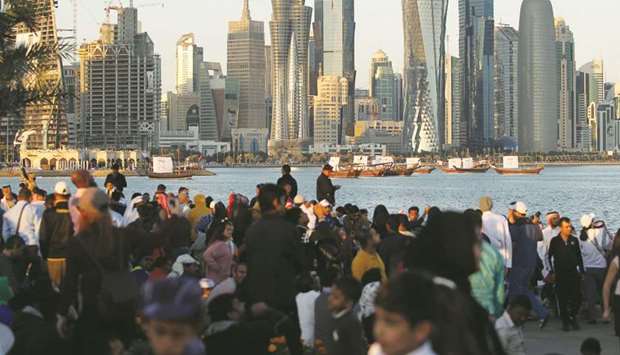Qatar’s international reserves are expected to total $37bn by the year-end, FocusEconomics has said in a report.
The country’s international reserves are expected to scale up to $38.2bn next year, the report said.
Qatar’s merchandise trade balance, which is the difference in value between imported and exported goods, is expected to reach $46.1bn in 2024, latest country forecast by FocusEconomics has shown.
This year, the country’s merchandise trade balance has been forecast to total $27.4bn, $33bn (in 2021), $37.6bn (2022) and $42bn (2023).
The report said that Qatar’s fiscal balance as a percentage of GDP is set to rise to 4.5% in 2024 from an estimated -7.3% this year.
According to FocusEconomics, Qatar’s public debt (as a percentage of GDP) has been forecast at 67 this year.
Qatar’s GDP has been estimated to reach $211bn in 2024 from $162bn this year.
Next year, it will be $175bn, followed by $187bn (2022) and $199bn in 2023.
GDP per capita, FocusEconomics said, has been estimated to reach $75,700 in 2024 from $58,869 this year.
GDP per capita next year will be $63,333, followed by $67,458 in 2022 and $71,589 in 2023.
Qatar’s economic growth in terms of nominal GDP will reach 6% in 2024 from -11.4% by the year-end.
Next year, economic growth in terms of nominal GDP will be 7.8%, 6.8% in 2022 and 6.4% in 2023.
The current account balance (as a percentage of GDP) will be 2.8 in 2024 compared with -4 in 2020, 0.3 (2021), 3.8 (2022) and 3.3 in 2023.
The country’s inflation, the report noted, will be -1.6% this year, 1.4% (2021), 1.8% (2022), 1.8% (2023) and 1.9% in 2024.
Qatar’s unemployment rate (as a percentage of active population) will remain a meagre 0.1% in 2024, from 0.4% this year.
Next year it will be 0.3%, 0.2% in 2022 and 2023, FocusEconomics said.
According to FocusEconomics, the non-energy private sector PMI languished in contractionary territory throughout the period, due to lower new orders, output and employment.
Moreover, the energy sector also appeared to shrink according to monthly industrial production data.
Turning to the third quarter, “activity looks to be rebounding” amid the phased lifting of lockdown restrictions, with the PMI averaging markedly higher in July and August compared to Q2.
“Encouragingly, limited new Covid-19 cases meant the country entered phase four of the government’s easing plan from September 1, which should further support activity in the remainder of the quarter,” FocusEconomics said.
The domestic economy is set to “shrink” this year as a whole. The lockdown will “cripple” the tourism sector for the majority of the year, while “depressed” energy prices will weigh on government finances and the external sector.
Nevertheless, a “strong” fiscal stimulus package to support the non-oil private sector should “cushion” the downturn.
FocusEconomics panellists see a 3.2% contraction in GDP in 2020, which is unchanged from last month’s forecast, before growth of 2.9% in 2021.
Consumer prices fell 3.4% in annual terms in July, matching June’s reading, likely driven by still fairly subdued demand.
They are seen dropping over 2020 as a whole. FocusEconomics panellists see consumer prices falling 1.6% in 2020, which is down 0.5 percentage points from last month’s forecast.


